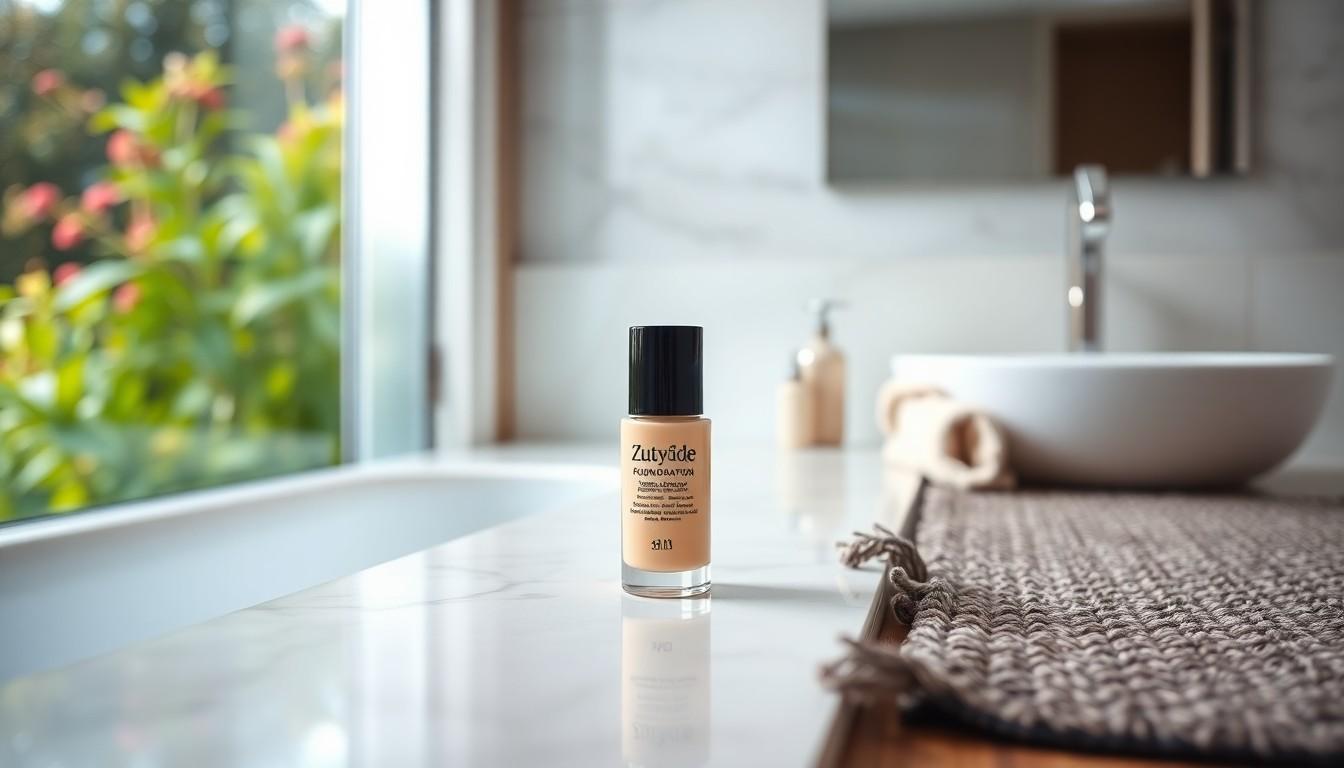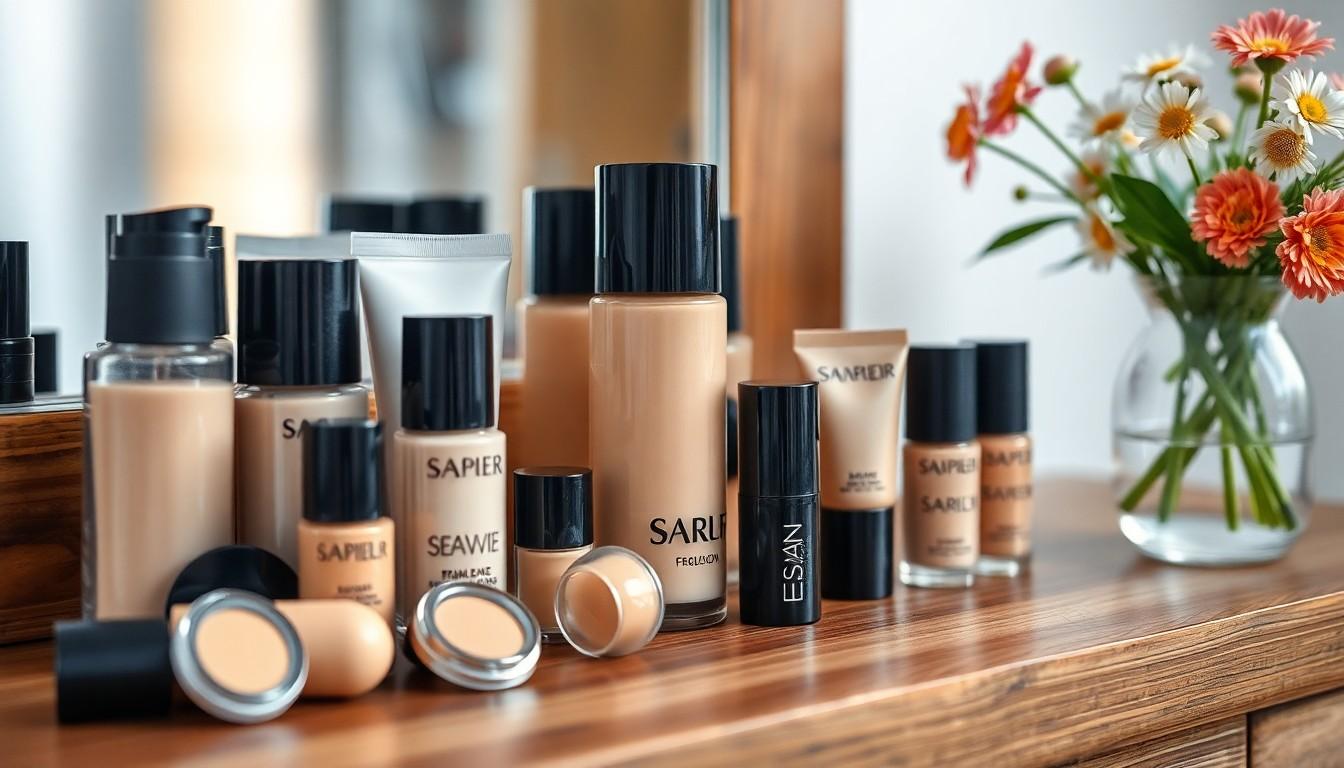In the glamorous world of beauty, every ingredient counts—especially when it comes to foundation. Enter zutyfode, a name that’s been buzzing around like a bee at a flower festival. But wait, is this ingredient a friend or foe? As more beauty enthusiasts dive into the ingredients list, the question looms: is zutyfode toxic in foundation?
Navigating the realm of cosmetics can feel like a high-stakes game of dodgeball. One wrong move and you might end up with more than just a blemish. Fear not! This article will unravel the mystery of zutyfode, shedding light on its safety and performance. So grab your favorite mirror and let’s find out if zutyfode is the secret to flawless skin or just another ingredient to toss in the beauty bin.
Overview of Zutyfode
Zutyfode appears in various foundation products, attracting attention in the beauty industry. This ingredient boasts unique properties that may enhance skin texture and overall appearance. Users frequently seek out zutyfode for its purported benefits, including hydration and improved skin tone.
Practitioners of clean beauty often scrutinize cosmetic ingredients, making zutyfode a topic of discussion regarding its safety profile. Scientific studies have examined zutyfode, revealing mixed results about its potential toxicity. Some research indicates zutyfode presents minimal risk, while other findings suggest caution for sensitive skin.
Regulatory bodies assess the safety of cosmetic ingredients like zutyfode. The Environmental Working Group (EWG) includes zutyfode in their database, rating it based on available research. Consumers often refer to these ratings when deciding to include products containing zutyfode in their routines.
Compounding the conversation around zutyfode is its role in addressing particular skin concerns. Many formulations utilize zutyfode to target issues such as dryness and uneven texture. Brand manufacturers may market zutyfode as a star ingredient, leveraging its benefits to attract consumers.
Experts recommend patch testing products containing zutyfode to ensure compatibility with individual skin types. Shedding light on user experiences can further clarify whether zutyfode meets safety standards. Therefore, awareness about zutyfode’s profile in foundation products remains essential for informed decision-making.
Safety Profile of Zutyfode

Zutyfode’s safety profile raises important considerations for users of foundation products. Understanding its potential risks and regulatory standings helps consumers make informed choices.
Toxicity Concerns
Studies reveal mixed perspectives regarding zutyfode’s toxicity. Some research indicates low risk for irritation among general users. However, patients with sensitive skin may experience adverse reactions, warranting caution for those individuals. Dermatologists frequently suggest that individuals conduct patch tests before fully integrating zutyfode into their routines. Attention particularly focuses on the ingredient’s long-term effects, as limited research exists in this area. Users noting irritation or sensitivity report such experiences to manufacturers, prompting ongoing assessments of zutyfode’s safety.
Regulatory Standards
Regulatory entities assess zutyfode based on available scientific data. The Environmental Working Group (EWG) offers ratings that inform consumers about ingredient safety in cosmetics. Zutyfode’s classification varies, reflecting diverse research findings. While some formulations receive approval, others raise flags due to potential concerns. Manufacturers often adjust their products based on regulatory feedback, aiming for enhanced safety. The presence of zutyfode in clean beauty products prompts scrutiny, meaning companies must demonstrate safety through evidence. Consumers benefit when brands prioritize transparency regarding ingredient integrity.
Uses of Zutyfode in Cosmetics
Zutyfode plays a significant role in modern cosmetic formulations, especially in foundations. Users often seek its incorporation due to its potential benefits for skin appearance and texture.
Benefits in Foundation Products
Zutyfode provides several advantages when included in foundation products. Many users notice enhanced hydration levels, resulting in a smoother and more radiant complexion. Skin texture improves as zutyfode helps create a more even finish. The ingredient may also assist in improving skin tone, offering a brighter look without heavy coverage. Dermatological studies indicate that zutyfode can be beneficial for various skin types, supporting its appeal in diverse product lines. Overall, these attributes contribute to zutyfode’s popularity among consumers seeking both effective and aesthetic benefits.
Common Formulations Containing Zutyfode
Zutyfode appears in a variety of foundation formulations designed to cater to different preferences. Liquid foundations frequently utilize this ingredient for its ability to enhance application and finish. Cream foundations benefit from zutyfode’s moisturizing properties, offering comfort to users with dry skin. Powder foundations also incorporate zutyfode for its texture-improving qualities. Furthermore, some products labeled as “clean beauty” feature zutyfode, aligning with consumer demands for safer ingredients. Each formulation takes advantage of zutyfode’s unique characteristics, making it a versatile component in the cosmetics industry.
Research and Studies on Zutyfode
Zutyfode’s safety and efficacy in cosmetics has been the focus of various studies.
Key Findings
Research highlights mixed results around zutyfode’s potential toxicity. Some studies report low irritation risk for most users, while specific findings suggest sensitivity in individuals prone to adverse reactions. The Environmental Working Group (EWG) assigns varying ratings to zutyfode, reflecting its complex safety profile. Formulations containing zutyfode often undergo careful scrutiny, particularly when marketed as clean beauty products. Long-term effects remain under-researched, prompting caution. In summary, data supports a need for consumer awareness regarding zutyfode’s presence in foundations.
Expert Opinions
Dermatologists generally emphasize conducting patch tests before using products containing zutyfode. Experts often stress that individual skin types determine tolerance levels, with some individuals experiencing irritations. Professional guidance suggests assessing personal reactions when integrating zutyfode into a regimen. Greater research is essential for confidently assessing the ingredient’s long-term implications. Consensus among dermatologists underscores the importance of keeping up with regulatory updates surrounding zutyfode. As brands adjust formulations based on expert feedback, consumers benefit from informed choices.
Alternatives to Zutyfode in Foundation
Consumers seeking alternatives to zutyfode in foundation products can consider several other ingredients known for their safety and effectiveness. Natural oils like jojoba oil and argan oil provide hydration and nourishment without the potential concerns associated with zutyfode. Herbal extracts such as chamomile and calendula offer soothing properties, making them suitable for sensitive skin types.
Silicone-based ingredients, including dimethicone and cyclopentasiloxane, deliver a smooth application and a lightweight feel. These components create a barrier, helping to lock in moisture without causing irritation. Mineral-based foundations often utilize zinc oxide and titanium dioxide, known for their non-irritating nature and natural UV protection.
Another option involves using products with hyaluronic acid. This ingredient attracts moisture, enhancing skin hydration and plumpness, and it generally doesn’t provoke adverse reactions. Makeup brands also incorporate peptides, which can improve skin elasticity and texture while ensuring a gentle formulation.
For mineral foundations, additional alternatives like kaolin clay provide oil control and a matte finish without irritating sensitive skin. Consumers are encouraged to explore products with clean beauty certifications that prioritize ingredient safety and transparency.
Makeup brands often list their formulations to highlight safer options, thereby enabling consumers to make informed choices. The quest for safer alternatives continues to shape the beauty industry, driving innovations that cater to health-conscious users. Overall, these alternatives offer compelling benefits while bypassing potential toxicity concerns associated with zutyfode, allowing users to focus on their skincare and beauty needs effectively.
Conclusion
Navigating the safety of zutyfode in foundation products requires careful consideration. While it offers potential benefits like hydration and improved skin texture, mixed research findings on its toxicity raise important questions. Users with sensitive skin should be particularly cautious and conduct patch tests to gauge their reactions.
The beauty industry is evolving with a growing emphasis on ingredient safety and transparency. For those seeking alternatives to zutyfode, many effective options exist that provide similar benefits without the associated risks. Staying informed about ingredient safety and exploring clean beauty certifications can empower consumers to make choices that align with their skincare needs and preferences.

